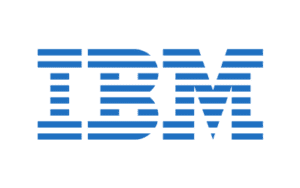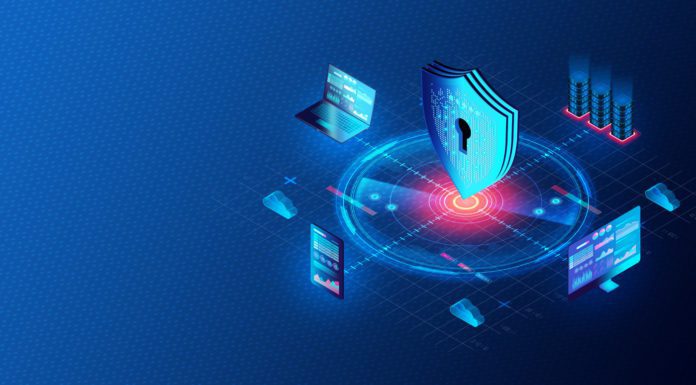Extended detection and response platforms, also known as XDR, provide sophisticated threat intelligence and behavior-based protection, allowing enterprises to detect and respond to cyber threats quickly.
Networks, endpoints, cloud services, and virtual environments are all at risk of being targeted by cyberattacks. Endpoints, in particular, are the biggest cybersecurity threat for enterprises, and with the recent COVID-19 pandemic, the number of remote workers has increased drastically. According to the SANS 2021 Endpoint Monitoring in a Dispersed Workforce Survey, 44% of enterprise IT departments manage between 5,000 and 500,000 endpoints.
With the average data breach in the United States costing $9.44 million USD in 2022, extended detection and response solutions are a critical investment for enterprises.
Also see: Best Network Management Solutions
Top 7 XDR Solutions
- CrowdStrike Falcon
- SentinelOne
- IBM Security QRadar
- ExtraHop Reveal
- Sophos Intercept X
- Trend Micro XDR
- Cortex XDR
- Features of an XDR Solution
- Choosing an XDR Solution
- Benefits of XDR Platforms
- From EDR to XDR: What’s the Difference?
Featured Partners: Extended Detection and Response (XDR) Software
There are many XDR solutions on the market, but here are some of our top picks.
Crowdstrike Falcon

CrowdStrike Falcon is a cloud-based extended detection and response solution. It uses AI and behavioral analysis to provide real-time protection against threats.
CrowdStrike Falcon has a cloud-based management console that makes it easy to deploy and manage. There is no need for on-premises equipment. This makes CrowdStrike Falcon an ideal solution for organizations that need a sophisticated XDR solution that is easy to deploy and manage.
Key Features
- Alignment to the MITRE Framework: CrowdStrike Falcon was built using the MITRE Adversarial Tactics, Techniques, and Common Knowledge (ATT&CK) methodology. This ensures it can adapt and protect against new threats as they emerge. Based on MITRE Engenuity tests, the platform was named a Leader in Gartner’s 2021 Magic Quadrant for Endpoint Protection Platforms for the second year.
- Single-Agent Design: CrowdStrike Falcon’s single-agent design ensures there is no need for separate endpoint agents, servers, or cloud subscriptions.
- Advanced Signatureless Protection: CrowdStrike Falcon’s advanced threat prevention capabilities are based on machine learning and behavioral analytics. This enables it to provide real-time protection against evolving and unknown threats without relying on signatures.
- One Platform for All Workloads: CrowdStrike Falcon provides complete endpoint protection across Windows, macOS, and Linux operating systems; virtual machines; and cloud workloads. Enterprises do not need to invest in any on-premises equipment.
- Device and Firewall Control: CrowdStrike Falcon offers granular device and firewall control within the Falcon console, allowing administrators to manage devices and firewalls across their entire network.
- API integration: CrowdStrike Falcon can be integrated with other security tools and services using its robust application programming interface (API). Organizations can easily integrate threat protection into their broader security strategy.
Pros
- No on-premises equipment
- Feature parity across operating systems
- Single-agent design
- Behavioral learning
- Firewall management
- Good API integration
- Intuitive dashboard
Also see: 7 Enterprise Networking Challenges
SentinelOne Singularity

SentinelOne Singularity is a powerful EDR solution that provides real-time protection against a wide range of threats. It uses machine learning and behavioral analytics to detect and block both known and zero-day threats.
Key Features
- MITRE ATT&CK Framework: MITRE has tested several EDR tools for their response to known threat behaviors exhibited by known criminal groups. In all tests and scenarios, SentinelOne outperformed most XDR solutions.
- Storyline Feature Threat Hunting: The Storyline feature in SentinelOne creates a timeline of all endpoint activities, allowing users to hunt for unusual behavior, understand context, and prioritize actions to take next. This feature makes SentinelOne a powerful tool for threat hunting, giving security analysts the insights they need to stay one step ahead.
- Single Agent for Endpoint Management: SentinelOne uses a single lightweight agent that can be deployed on all device types and operating systems. This feature eliminates the need to manage multiple agents and configuration processes, saving precious time and resources.
- Works With Multiple OSes: SentinelOne can protect any device running on Windows, macOS, and Linux operating systems. Additionally, it can be seamlessly integrated with other security tools across the enterprise to provide comprehensive protection against all threats.
- Device and Firewall Control: SentinelOne gives administrators granular control over device access and network firewalls. This feature allows them to manage the entire enterprise network from a single console easily.
- RESTful API: SentinelOne offers a rich RESTful API that can be integrated with other services and tools seamlessly. This allows enterprises to leverage the power of SentinelOne within their broader security stack.
Pros
- Robust threat intelligence
- Advanced behavioral analytics
- Powerful threat-hunting capabilities
- Easy integration with other security tools
IBM Security QRadar XDR

IBM Security’s QRadar XDR provides one of the most comprehensive and open threat detection and response solutions available on the market.
QRadar XDR integrates endpoint detection; security information and event management (SIEM); network detection and response (NDR); security orchestration, automation, and response (SOAR); and even threat intelligence to help cybersecurity teams quickly identify, understand, and prioritize threats.
AI-driven investigations allow security analysts to rapidly investigate the cause and scope of an identified incident for more efficient operations. QRadar XDR also leverages the X-Force Threat Intelligence platform to share security research, aggregate intelligence, and collaborate with peers for improved accuracy and agility in defending against constantly changing cyber criminal activities.
Key Features
- The MITRE ATT&CK Framework: QRadar XDR’s design is based on the MITRE framework, which provides a common language for describing the actions and tactics in current threat intelligence information, so it unifies all big data to guide improvement in XDR security posture.
- IBM QRadar XDR Connect: IBM QRadar XDR Connect is a web-based dashboard that allows security teams to easily view and manage all of their endpoints from one simple interface. This feature provides centralized visibility into each device’s status, health, and configuration, allowing for more efficient incident response and remediation efforts.
- IBM QRadar SIEM: QRadar SIEM provides intelligent security analytics for real-time threat detection and response. It also pairs seamlessly with XDR to track malicious activity at every stage of an attack, from initial reconnaissance to data exfiltration.
- IBM QRadar NDR: QRadar NDR is a next-generation network intrusion detection and prevention solution that lets users detect, investigate, and block threats across the entire network.
- IBM QRadar SOAR: This intelligent security orchestration, automation and response platform enables users to automate incident response tasks, integrate with other tools, and manage security exceptions across the enterprise.
- Randori Recon: Randori Recon is a powerful threat intelligence tool that allows users to discover unknowns and reduce the attack surface.
- IBM Security ReaQta: This AI-unified threat intelligence platform provides real-time insights into the status and health of all endpoint devices.
Pros
- Comprehensive security solution with multiple capabilities
- Robust threat intelligence and detection capabilities
- Zero-trust cybersecurity model
- Easy integration with other security tools and services
- History of providing top-quality enterprise security solution
Also see: Best Network Automation Tools
ExtraHop Reveal(x) 360

ExtraHop Reveal(x) 360 is an XDR solution that offers unrivaled security for businesses. Going beyond the capacity of traditional XDR, ExtraHop’s dynamic cyber defense platform Reveal(x) 360 provides organizations with unprecedented visibility into their infrastructure, workloads, and data-in-flight.
Applying cloud-scale AI, it monitors petabytes of traffic per day, performing line-rate decryption and comprehensive behavioral analysis to detect suspicious activity and hunt for advanced threats. For these reasons, ExtraHop XDR has repeatedly been recognized as a market leader in network detection and response by research firms like IDC and Gartner.
Key Features
- Works Across Multiple Environments: ExtraHop XDR is a fully cloud-native platform that allows users to detect and respond to threats across their entire environment. This includes on-premises networks, public cloud services, software-as-a-service (SaaS) applications, and more.
- Cloud-Based Record Store With 90-Day Lookback: The built-in storage of the ExtraHop XDR platform lets users perform streamlined incident investigations. Users can also set up alerts and take automatic actions on detected threats, giving them full control over their security posture.
- 360 Sensor: The 360 Sensor provides a real-time stream of network data for all endpoints, so users can detect threats as they emerge.
- Real-time Stream Processing: ExtraHop XDR’s powerful data processing engine performs real-time stream processing to detect anomalous activity and accurately pinpoint malicious behavior.
- MITRE ATT&CK Enterprise Matrix: ExtraHop’s MITRE ATT&CK enterprise matrix provides users with a complete view of their security posture and helps them detect ransomware, botnets, unauthorized data access, and more.
- Machine Learning and Global Intelligence: ExtraHop XDR uses a combination of machine learning algorithms and global threat intelligence to help users stay ahead of emerging threats.
Pros
- Easy to set up and use
- Forensic Lookback
- Cloud-Scale AI
- Active Directory decryption
- Cloud-agnostic
- Zero infrastructure
- Over 25 enterprise integrations
Sophos Intercept X

Sophos Intercept X is a next-generation endpoint security solution that combines deep learning and signatureless exploit prevention to keep devices safe from the latest threats.
Key Features
- Deep Learning Capabilities: One thing that sets Sophos Intercept X apart from other endpoint security solutions is its deep learning capabilities, which allows the software to evolve constantly and adapt to new threats.
- Anti-Ransomware Technology: This technology uses behavior-based detection to identify ransomware attacks and stop them before they can encrypt your data. It also includes a file reputation system that checks files against a database of known malicious files. If a file is found to be malicious, it will be blocked before it can do any damage.
- Signatureless Exploit Prevention: This technology uses machine learning to detect and block even the most sophisticated exploits. It also includes an application control module that allows users to allow or block certain applications. This ensures only approved applications can run on a system, further protecting it from attack.
- Root Cause Analysis: If users do fall victim to a cyberattack, Sophos Intercept X can help them figure out how it happened with its root cause analysis feature. This allows users to see exactly what went wrong, so they can take steps to prevent it from happening again in the future.
- Managed Detection and Response: Lastly, Sophos Intercept X offers managed detection and response services. This is an elite team of threat hunters who monitor systems for threats and resolve any issues that arise.
Pros
- Easy to deploy and use
- Excellent customer support
- Signatureless detection
- Sophos central dashboard for all Sophos products
Trend Micro XDR

Trend Micro XDR is an XDR platform that collects and correlates data across multiple security layers. It was named a leader in the Forrester New Wave Extended Detection and Response Providers.
Key Features
- MITRE Attack Framework: One of the critical features of Trend Micro Vision One is that it is built on the MITRE ATT&CK framework. In recent MITRE ATT&CK Evaluations for Wizard Spider and Sandworm adversary groups, the tool ranked first in the protection category for ensuring early attack prevention.
- SIEM Connector to Forward Alerts: Trend Micro Vision One’s SIEM connector allows users to forward alerts to their SIEM system. This integration provides a complete picture of the organization’s security posture by consolidating data from multiple sources into one platform.
- Dynamic Attack Surface Risk Management: Trend Micro’s Dynamic Attack Surface Risk Management is a feature that constantly monitors an organization’s attack surface for changes. It uses data from SIEM, firewalls, endpoints, and other sources to identify risks and vulnerabilities. DASRM also includes a risk scoring system that rates the severity of each risk, so users can prioritize which ones to address first.
- Intuitive Threat Detection, Investigation, and Response: Trend Micro’s XDR platform is designed to be intuitive and easy to use. It includes various features that make threat detection, investigation, and response faster and more efficient.
- Advanced Workflow and Automation Tools: It includes advanced workflow and automation tools like Security Playbooks and Sandbox Analysis to help users streamline investigation processes and respond to threats.
Pros
- Intuitive, user-friendly interface
- Same console as the entire security suite
- Built on the MITRE ATT&CK framework
- Easy to integrate with Trend Micro Products and other third-party products
Cortex XDR

Palo Alto’s Cortex XDR is an endpoint security solution that promises to stop modern attacks by integrating data from any source, including endpoints, networks, cloud applications, and user activity, to detect and investigate incidents. The artificial intelligence engine then processes this data to identify suspicious behavior and anomalies. Investigators can use the PowerQuery analytics platform to quickly understand the root cause and take appropriate action when an incident is detected.
Key Features
- AI-Based Threat Detection: Cortex XDR’s AI-based threat detection uses machine learning to constantly evolve and improve its ability to detect and protect against new threats.
- Scope-Based Access Control: This feature allows security teams to specify exactly which data and applications users have access to. This is a great way to prevent unauthorized access to sensitive data and ensures only authorized users can access the information they need.
- Analytics Engine: Cortex XDR also includes a robust analytics feature, which allows users to quickly and easily run queries on data to find trends and patterns. This is a valuable tool for making sense of large amounts of data quickly.
- Managed Threat-Hunting Service: This service provides expert help in identifying and investigating potential threats. This is a great option for businesses that don’t have the internal resources to dedicate to threat hunting.
- Automated Root Cause Analysis: Cortex XDR includes automated root cause analysis. It can automatically identify the root cause of a security event and provide a fix.
Pros
- Intuitive user interface
- Customizable dashboards
- USB protection
- Integration with Palo Alto NGFW
- Advanced analytics
Also see: Best Network Virtualization Software & Products
Features of XDR Software
A good XDR solution will have the following key features:
- Continuously analyze endpoint, network, and cloud activity.
- Use artificial intelligence or machine learning to formulate baselines for system behaviors.
- Automate threat and anomaly detection across the hybrid environments.
- Deploy forensics upon detection for investigation and remediation.
- Integrate with other security products and platforms, such as firewalls, endpoint protection agents, and SIEM tools.
- Enable rapid detection and response to security incidents.
- Offer customizable dashboards and reports for ongoing visibility and compliance.
Choosing an XDR Solution
Ultimately, when choosing an XDR solution, there is no one-size-fits-all approach. Instead, businesses should take stock of their existing infrastructure, consider the specific needs of their endpoints and employees, and evaluate different technical features to find the right solution for their organization.
Take stock of endpoints
When choosing an XDR solution, it’s important first to take stock of existing endpoints. This approach will help to determine the most important capabilities and features for your organization. For example, how many remote employees do you have, and are your office locations connected via a central network?
Consider whether breaches need to be reported
Another important consideration is whether or not your organization must comply with industry-specific regulations, such as HIPAA or GDPR. This can help to determine if the solution needs to include built-in reporting capabilities and investigation tools.
Determine necessary technical features
The technical capabilities of an XDR solution are also essential to consider. Many solutions offer a range of features, such as artificial intelligence-based threat detection, USB protection, and integration with other security products like firewalls and endpoint protection agents.
Consider technical complexity
You must also consider the technical complexity of the solution. If you need a simple, straightforward solution that is easy for staff to use, then look for one that is user-friendly and has a centralized management console.
Determine whether a managed service is needed
It’s important to think about whether you want a managed service for your XDR solution. This can be an attractive option for businesses that don’t have the internal resources to dedicate to threat hunting and investigation.
Also see: Top Managed Service Providers
Benefits of XDR Platforms
Given the growing prevalence of cyber threats and data breaches, many businesses are turning to XDR platforms as a key part of their cybersecurity strategy. Some of the key benefits of these platforms include:
- Advanced Threat Detection: By leveraging advanced analytics and AI/ML capabilities, XDR platforms are able to detect even subtle signs of an attack, allowing organizations to proactively mitigate threats before they have a chance to cause damage.
- Improved Investigation and Response: With features like advanced forensics, real-time threat intelligence feeds, and centralized reporting capabilities, XDR platforms facilitate fast investigations and enable businesses to respond quickly to security incidents.
- Centralized Management: By offering a centralized management console, XDR platforms make it easy to monitor and manage all of the endpoints on a network, helping to simplify cybersecurity operations and reduce administrative overhead.
- Reduced Complexity: With their ability to integrate with other security products and automate many security tasks, XDR platforms can help businesses simplify their overall cybersecurity landscape. As a result, businesses can focus their resources on other areas of growth and innovation rather than just managing security.
From EDR to XDR: What’s the Difference?
At their core, extended detection and response platforms are designed to provide more robust security capabilities than traditional endpoint detection and response (EDR) tools.
Scope
One of the key differences between EDR and XDR solutions is scope. While many EDR tools offer some degree of protection for remote workers, fully-featured XDR solutions can protect all endpoints, whether they are on the company network or remotely. In addition, they extend security across networks, cloud services, and virtual environments.
ML and AI
Another difference lies in the level of machine learning (ML) and artificial intelligence (AI) XDR platforms use to detect threats. While EDR solutions typically rely on signature-based detection methods, which can be prone to false positives, XDR platforms incorporate a range of advanced behavioral process analysis and threat detection techniques to provide more accurate and reliable threat identification.
Enhanced remediation
XDR solutions are often equipped with enhanced remediation features that allow security administrators to quickly and efficiently address threats. This can include tools for automatic threat scrubbing, root cause analysis, or automated response options.






